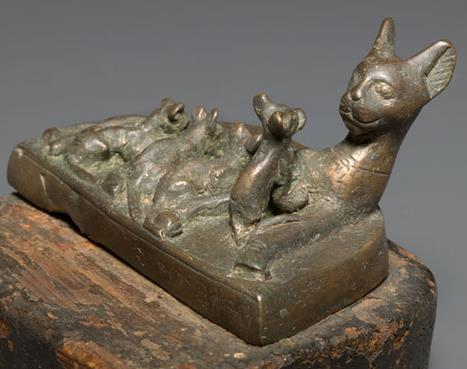From domesticated cats to mythic symbols of divinity, felines played an important role in ancient Egyptian imagery for thousands of years.

[Credit: Suzanne DeChillo/The New York Times]
Likely first domesticated in ancient Egypt, cats were revered for their fertility, associated with royalty and a number of deities, and valued for their ability to protect homes and granaries from vermin.
On public view for the first time is a gilded Leonine Goddess (770–412 B.C.E.)—a lion-headed female crouching on a papyrus-shaped base—that entered the Brooklyn collection in 1937 and was conserved specially for this installation.

Period, Dynasty 26 or later, circa 664–30 BCE [Credit: Brooklyn Museum]
Also included are furniture and luxury items decorated with feline features.
Divine Felines: Cats of Ancient Egypt is organized by Yekaterina Barbash, Associate Curator of Egyptian Art, Brooklyn Museum and runs through December 2014.
Read Divine Felines' New York Times Review here.
Source: Brooklyn Museum [July 30, 2013]